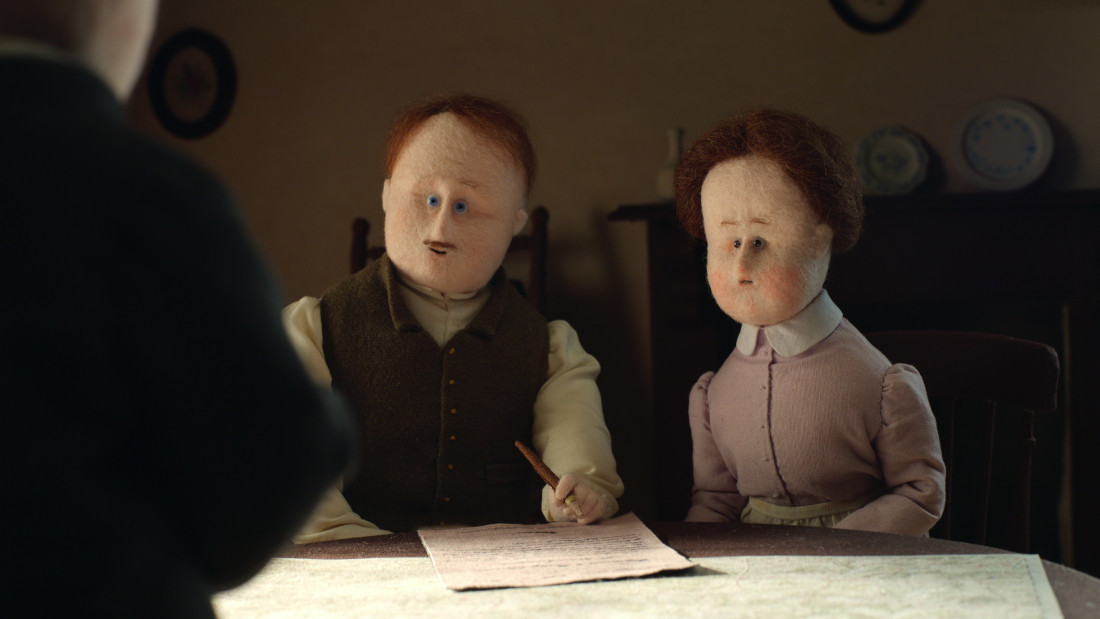Critipeg: The House
★★★★ out of 5
Reviewing an anthology film is always a tricky prospect. Multiple directors contributing individual segments to a feature inevitably leads to certain segments standing out above others. The themes tying the chapters together can be loose, while the quality of each can be inconsistent. The House is an especially odd duck, with its segments remaining consistent in quality and style, but varying wildly in genre and tone.
The stop-motion animated The House, written by Irish playwright Enda Walsh (Disco Pigs, Once), is advertised by Netflix as a “satire” or a “dark comedy.” This is a little misleading. The film’s three segments are all dark and unsettling, but they range in tone from “a comedy about anxiety” to “full-blown Gothic horror.”
Each of the film’s three segments take place in the same house, each presented in a different time period. They all deal with some form of domestic angst attached to the house itself. Otherwise, each takes a unique approach to the material.
The first segment, by far the film’s best, is a surreal Victorian horror about a young family moving into the eponymous house, an attempt by the down-on-his-luck patriarch to recapture the upper-class status of his youth. He strikes a mysterious bargain to gain possession of the house, a sort of “deal with the devil” that plunges his two young daughters into a hellish house full of secrets and sorrow.
Co-directors Emma De Swaef and Marc James Roels manage to use cute, fuzzy puppets to create a legitimately scary bit of cinema. That seems impossible. How can something that presents no physical threat be genuinely horrifying? It’s a reminder that most of what makes good horror actually scary has nothing to do with actual threats. The scares come from camera placement, editing, lighting, sound design – all those aspects of craft that build the tension and atmosphere that create horror.
The second segment, directed by Niki Lindroth von Bahr, is the film’s weakest. It’s not entirely von Bahr’s fault. There’s a certain amount of tonal whiplash going from De Swaef and Roels’ unmitigated horror to von Bahr’s more tempered and paranoid dark comedy. The segment stars Pulp frontman Jarvis Cocker as an anthropomorphic rat who has purchased the house, attempting to renovate it into a hip, soulless home for millennial yuppies. His plans are challenged by a growing bug infestation and some other eerie squatters.
von Bahr’s segment evokes the sort of self-righteous, Book of Job-esque suffering that the Coen brothers explored in movies like A Serious Man and Barton Fink. The rat’s problems snowball and multiply until the line between unfortunate coincidence and divine punishment is blurred beyond recognition.
The third segment is the most overtly comedic, even while set in a future climate catastrophe where sea levels have covered the entire landscape surrounding the house. Director Paloma Baeza follows the futile attempts of the house’s owner (this time it’s an anthropomorphic cat) to turn it into an apartment building, dutifully ignoring society’s collapse.
In a time when so much of Netflix’s original programming feels like it was designed by an algorithm, it’s refreshing to see something as offbeat as The House. Lovingly handcrafted (literally) and idiosyncratic, its unevenness actually increases its appeal. What a relief to have something this weird and beautiful only a couple clicks away
Published in Volume 76, Number 14 of The Uniter (January 20, 2022)








